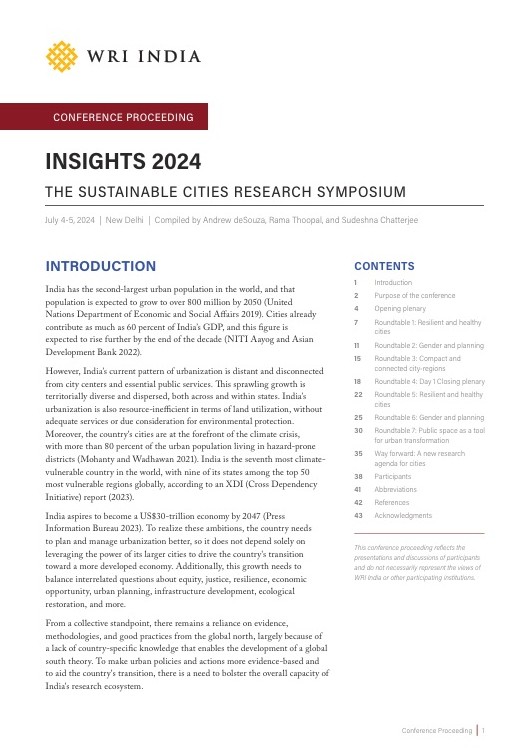To Clean Its Air, There Are Miles to Go Before Delhi Can Sleep
by , , e -
This blog post first appeared in The Wire.
After a few months of respite, Delhi’s air quality plunged to unhealthy levels a week or so ago, rekindling concerns about the approaching winter, and debates on managing crop burning, vehicular pollution and cracker-bursting during the upcoming Diwali festival. Since September, the national capital has been boasting of improved air, hovering around the ‘satisfactory’ mark of the air quality index (AQI), before it slid to ‘moderate’ at the start of October.
As the air cooled further last week, the AQI dropped to ‘very poor’. This unfortunate development wasn’t entirely unexpected, as news reports also warned of changing wind direction and an increasing incidence of stubble burning in the neighbouring Punjab and Haryana.
Notwithstanding these changes, Delhi’s air has in fact improved compared to the same periods in previous years, according to data from the Central Pollution Control Board and the Delhi Pollution Control Committee (DPCC).
At a Lok Sabha session on July 27, 2019, Prakash Javadekar, the Union environment minister, said in reply to a question on India’s pollution status and the action the government’s taking that in 2018, the PM2.5 levels in Delhi were 7.3% and 14.8% lower than in 2017 and 2016, and the PM10 levels were 8.6% and 16.5% lower in the same years. He also said that the change in the air quality has been gradual, with PM2.5 in 2016-2018 being 25% lower than the 2011-2014 baseline, and that the number of ‘good’, ‘satisfactory’ and ‘moderate’ days have increased from 106 and 152 in 2016 and 2017 respectively, to 159 in 2018. Similarly, the number of ‘poor’, ‘very poor’ and ‘severe’ days have fallen from 246 and 213 to 206 in the same years.
In August, news outlets quoted DPCC figures indicating the average air pollution in the first seven months of 2019 was the lowest relative to the same period in the seven years since 2012.
The Centre has launched various initiatives to reduce air pollution over and around Delhi. These include the Graded Response Action Plan, the Comprehensive Action Plan and the Air Quality Early Warning System, and could be responsible for this heartening shift.
Several sectoral reforms could also have chipped in, such as the amendments to leapfrog to the BS-IV and BS-VI emissions standards for vehicle engines, operationalisation of the Eastern and Western Peripheral Expressways, the imposition of environment protection charges on diesel vehicles with engine capacity of 2,000+ cc in Delhi-NCR, and linking the ‘pollution under control’ data on emissions with the VAHAN data.
Other measures include closing the Badarpur thermal power plant, shifting brick kilns to technology that ensures uniform distribution of heat and lower emissions, installing online continuous monitoring devices in all ‘red’ category industriesand banning pet coke and furnace oil.
Considering a large share of the pollution in Delhi is due to crop burning in the neighbouring states, especially in November, the Centre launched an in situ crop-residue management system in Punjab, Haryana, Uttar Pradesh and the National Capital Territory in 2018. It also installed three waste-to-energy plants – in Sukhdev Vihar-Okhla, Ghazipur and Bawana – with a combined capacity of 5,100 tonnes/day, which have helped reduce emissions from waste. Finally, Delhi has also introduced 60 mechanised road-sweeping machines (till date).
Progressive but insufficient
But for all these progressive measures, the annual average air quality in Delhi is still two to three times over the recommended limits. A new analysis by the Centre for Science and Environment warns that Delhi must further cut at least 65% of its pollution to ensure its air quality consistently hovers around the clean-air thresholds: of 60 μg/m3 on a daily basis and 40 μg/m3 annually for PM2.5; and 100 μg/m3 daily and 60 μg/m3 annually for PM10.
To achieve these targets this, Delhi could benefit many times over from the National Clean Air Programme, which the Centre launched in January 2019, which calls for a “collaborative and participatory approach involving relevant Central ministries, state governments, local bodies and other stakeholders” across the nation, to attack all sources of pollution.
Additionally, while the extant initiatives are commendable, stricter, steadier and persistent implementation is key to ensuring that Delhi’s air remains clean.
Delhi could follow the example of Mexico City, and use its recently launched early warning system to generate health advisories for the people, especially children, senior citizens and other sensitive groups. Openly burning garbage is a particularly prickly problem and which proliferates during the city’s winter. Efficiently collecting waste can deal with this issue – as well as providing adequately equipped shelter to those who light these fires for the heat.
Public participation is crucial. In large cities like Delhi, people play a major role in providing the social capital and enable effective solutions. Without their interest and cooperation, an air-pollution control policy can’t hope to succeed, and to engage them, the government should reach out to the people at large, through awareness campaigns, workshops, media programmes and by reaching out to schools and colleges.
And even once all these changes are in place, there will need to be stringently implemented, or long-term success will remain out of reach. To this end, the government should use technological solutions and work with the private sector as well. Incentivising companies, such as through tax reliefs, could be a good first step to get them involved.
The upcoming winter is effectively a testing ground, and with steady and serious implementation, it shouldn’t be long before Delhi has blue skies and clean air again.
Mani Bhushan Jha, Ajay Singh Nagpure and Bhavay Sharma are part of the Air Quality and Sustainable Urbanisation program, WRI India Ross Center. Nitya Kaushik is a communications specialist at WRI India.


